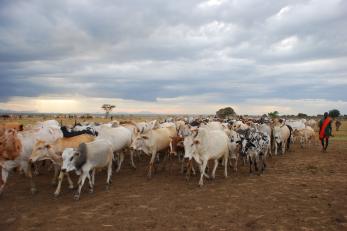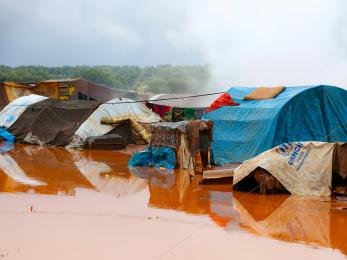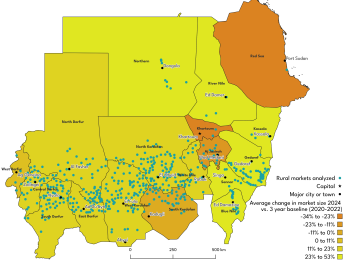COVID-19 Impact on Livestock Markets in the Horn of Africa

Livestock provide a livelihood for millions of people across the Horn of Africa. In addition to livestock producers, the livestock economy creates jobs for traders, transporters, animal health workers, food processors and retail outlets such as butcheries and street food vendors. In dryland areas, livestock trade drives the economy and generates revenues that are further invested into trade in staple foods and other sectors.
Since late March 2020, livestock markets have largely stalled due to the COVID‑19 prevention measures put in place by governments across the Horn of Africa. Movement restrictions, border closures, and, in some countries, the closure of livestock marketplaces stopped or increased the cost of supplying livestock to domestic and international markets. Although government restrictions challenged livestock markets across the region, the loss of demand for meat and meat products in urban consumer markets has had the greatest effect on livestock trade.
Livestock produced in East Africa's dryland regions, also known as the arid and semi-arid lands (ASAL), by small-scale pastoralists and agro-pastoralists supplies close to 80% of the meat consumed in urban centers across the region. Livestock are processed into meat and meat products (e.g. sausage and similar foods) with the majority being sold through restaurants, bars and street food vendors as well as institutions such as schools, universities and hospitals. Meat is also sold directly to families through supermarkets and butcheries. Most livestock is processed and consumed domestically except in Somalia where live and processed animals are exported to the Saudi Arabian peninsula.
As governments worked to control the spread of COVID‑19, they closed non-essential businesses and workspaces, effectively eliminating demand for livestock products by restaurants, bars, street vendors and other institutions. In most cases, meat continued to be supplied through supermarkets and butcheries but, because this is only a small portion of meat end-markets, the overall need for animals to be supplied through value chains was greatly reduced.
The COVID‑19 and Livestock Market Systems: The impact of COVID‑19 on livestock-based economies in the Horn of Africa report presents findings for a five-country study conducted by Mercy Corps in May and June 2020. Mercy Corps monitored livestock systems in Somalia, Ethiopia, Kenya, Uganda and South Sudan to understand the interplay of diverse market forces as influenced by COVID‑19 mitigation measures, as well as seasonality, locusts and Rift Valley Fever (RVF). This study focused on live animal, meat and milk value chains originating in the ASAL areas as well as major domestic and export consumer markets. Information was collected through existing programs and augmented with key informant interviews. This report aims to fill knowledge gaps and offer recommendations to support coping and recovery.
Recovery support efforts must take a holistic approach and closely assess and consider larger economic recovery efforts. Unlike other shocks that affect livestock markets (disease outbreak, drought, etc), COVID‑19 has gutted the very driver of livestock supply chains; consumer demand for meat and meat products, through the closure of most food outlets as well as the loss of income by urban families. Recovery efforts will need to closely monitor the ability of agro-pastoralists and pastoralists to care for (feed and water) their livestock as well as earn and income through non-livestock livelihoods while urban economies recover and consumer demand increases.

